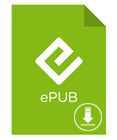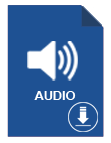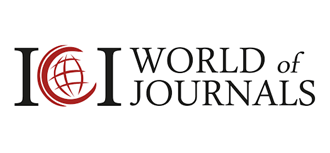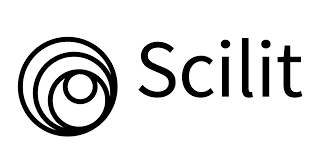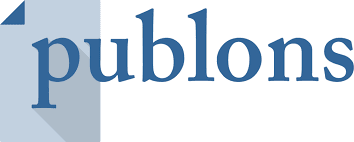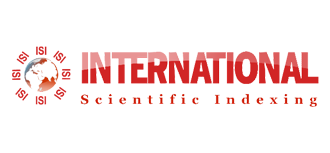Trends of Caffeine Consumption and Addiction Amongst Centennial and Millennial University Students of Karachi
Alishba Solangi1*, Sumaiya Munim1, Hafsa Farhat1, Warda Zanib1, Shareea Javed1 and Akhtar Ali2
1Medical officer, Bahria University medical and dental college Karachi, Pakistan
2Lecturer, Department of Pharmacology, Ziauddin University, Pakistan
Submission: July 23, 2021; Published: September 21, 2021
*Corresponding author: Alishba Solangi, Medical officer, Bahria University medical and dental college Karachi, Pakistan
How to cite this article: Alishba Solangi*, Sumaiya Munim, Hafsa Farhat, Warda Zanib, Shareea Javed and Akhtar Ali. Trends of Caffeine Consumption and Addiction Amongst Centennial and Millennial University Students of Karachi. Open Access J Neurol Neurosurg 2021; 16(1): 555929. DOI: 10.19080/OAJNN.2021.16.555929.
Abstract
Background: Caffeine is a stimulant of various centers in the brain, it is therefore used widely amongst centennials and millennial university students of Karachi which helps them to perform well in their daily activities. The continuous use of caffeine produces dependency among consumers and they are unable to reduce their consumption. This study aimed to compare the effect of daily consumption and type of caffeinated products used amongst generation Y and generation Z.
Methods: This cross-sectional study was conducted from October 2019 to January 2020. The calculated sample size was 384.The sample population consisted of 2 generations namely millennial and centennials of age groups (23-29) and (17-22) respectively. Both the groups were questioned through preformed proforma and results were assessed.
Results: 55% of generation Y and 58.6% of generation Z consume caffeine mainly in the form of tea. In 50% of both generations caffeine consumption increases during exams. Caffeine intake relieves headache (p=0.03) in majority. Significant number of population was aware of the availability of caffeinated tablets (p=0.03). Practice of checking the amount of caffeine on the nutritional label is also significantly uncommon (p=0.01). Generation Z (39.8%) was more willing to educate others regarding caffeine addiction.
Conclusion: Both the university generations consume caffeine, but the proportion is higher in Generation Z.
Keywords: Caffeine; Addiction; Centennial; Millennial; Students
Introduction
Caffeine is an alkaloid compound found naturally in more than 60 plants including coffee beans, tea leaves, cocoa bean and cola nuts1. It is a pharmacologically active substance which is used as stimulant of various brain centers and is capable of producing positive subjective effects [1,2]. Because of these properties it’s been widely used especially among the younger generations like college/university going students. It is considered safe in mild to moderate doses or when consumed occasionally. As per description of WHO [3,4], its intake for a longer period of time produces a clinical disorder, called ‘caffeine dependency’. This leads to the inability of consumers to reduce its consumption regardless of their awareness about associated health problem such as anxiety, addiction, gastric upset and insomnia [5-7].
Regarding the sources, coffee, tea and soft drinks are being used as major sources of caffeine [8]. According to a survey conducted by Gallup Pakistan in 2008, more than 90% of our population prefer tea over coffee and it is the major source of caffeine in our set up [9]. Moreover, Pakistan has one of the highest per capita tea consumptions i.e.1 kg/capita as compared to world’s average of 0.75 kg/capita [10]. According to census in 2017, total population of Pakistan is approximately 207,774,520, 8.5 % of which belongs to age group 25-29 years, 9.5% are of age group 20-24 years and individuals of age group 15-19 years comprises 9.8% of the total population. Epidemiology divides generations into multiple demographic cohorts. Millennial or generation Y is composed of individuals, who are born from 1977 to 1994, and are ethnically diverse, incredibly sophisticated technologically wise. Followed by centennials or generation Z, the culturally diverse demographics; born from 1995 to 2012 [11]. They have grown up in an era of highly advanced social media and technically sound environment of electrical gadgets, which is ingrained in their nature.
Though brought up in different decades yet both populations share similar health concerns in relation to their lifestyles. Stress being the top most along with other issues like lack of sleep, coping with grades and having time to socialize with family and friends. Regarding health knowledge, most of the generation Y-ers received it through high schools while generation Z-ers are obtaining it by internet, TV and other electronic media [11]. Therefore, in present study we aim to highlight the actual and potential risk of caffeine addiction and its role in daily lives of centennial and millennial university students of Karachi. Moreover, it aims to compare the effect of daily consumption and type of caffeinated products used among these two generations.
Materials and Methods
For this cross sectional survey, 384 university students of age groups 23 to 29 and 17 to 22 years were selected by convenient based sampling. The study sample was much diversified comprising of both medical and non-medical institutes of Karachi. Sample size was calculated from OpenEpi software. After the approval from IRC and ERC of Bahria University Medical and Dental College, Karachi, data was collected from Bahria University Medical and Dental College, Dow University of Health Sciences, National University of Science and Technology and Bahria University (Karachi Campus) from October 2019 to January 2020. Both verbal and informed written consents were obtained from all the participants prior to the filling of proforma. In order to rule out the interviewee bias and lack of interest of participants, the sample size was raised to 447. University students and hostellite were the part of this study, whereas generation Z-ers who were below 17 years of age and had just migrated from a region other than Karachi were excluded. Data collection from each student was carried out by an interviewer using a pre-coded questionnaire which was divided into 4 sections, containing 10 questions each. Section one was composed of demographic details, section two dealt with practices regarding quantity and forms of caffeinated products consumed daily, section three dealt with effects of caffeine after regular consumption and symptoms associated with it and lastly section four included caffeine awareness questions. In order to remove interviewer bias, interviewers were trained for this purpose. Practices were assessed considering the consumption of caffeine emphasizing on the specific caffeinated products consumed and their quantity utilized per day. Data analysis was done by using IBM SPSS, version 25. Pearson’s chi square was used as a primary statistical test. Descriptive statistics were used to check frequencies and percentages of categorical variables. P value <0.05 was considered significant.
Results
The sample population consisted of 2 generations namely millennial and centennials of age groups 23-29 years and 17-22 years respectively. The two groups were not equally divided as only university students amongst the two generation Y and Z were considered. Majority of the population in our data were females (n=284, 68.5%) in both generations. As the study was exclusively based on university students, the predominant generation was of Centennials (n=382, 50%) amongst which the participants of 21 years of age were in abundance (n=123, 32.2%). About 55% of generation Y and 58.6% of generation Z consume caffeine. Amongst the caffeinated products, majority of the participants consume tea (50% in generation Y and 48.6% in generation Z). Majority of the population prefer moderate tea in terms of “strength” of beverage (n=172, 42.7%). About half of the participants (generation Y 50% and generation Z 52.5%) responded that their consumption increases during exams and the usual time of consumption is in the morning (generation Y 40.8% and generation Z is 47.8%).30% of generation Y and 28.3% of generation Z stated that the reason behind starting caffeine was their family.
About40% millennial and 33.2% centennials consumed caffeine to avoid sleep mainly for the purpose of studying. 67.5% of Y-ers and 58.1 % of Z-ers thinks that the concentration starts to divert when caffeine is not available. Majority thought that consuming caffeine relieves headache (p = 0.03). Mood swings after the habitual consumption of caffeine (p = 0.02) were also reported. Prolonged caffeine consumption had an effect on appetite (p = 0.02). About 57.3% of generation Y and 49.7% of generation Z have positive family history of addiction related to caffeinated products (tea, coffee, pills, gums and soft drinks) (p = 0.027). 55% Y and 54.5% Z responded that they had usually offered coffee to their guest when they were host while 67% of generation Y 62% of generation Z usually got the offer of tea when they visit somewhere as a guest (p = 0.01).
Most of the participants were aware of the availability of caffeinated tablets (p = 0.03) but few of the participants consume such tables with prescription. The practice of checking the amount of caffeine mentioned on the nutritional label of various caffeinated products is also lagging behind (p = 0.01). Generation Z (39.8%) were more willing to educate others regarding caffeine addiction as compared to generation Y (37.5%) (Tables 1-3).



Discussion
Present study aimed to assess the trends of caffeine consumption among university students of Karachi in two generations i.e. generation Y (millennial) and generation Z (centennial). The frequency of regular caffeinated products consumers is 58.5% whereas, 24.4% consume it sometimes. This study showed that in generation Y, 55% population consume caffeine daily, 32.5% consumes sometimes and 12.5% does not consume caffeine in any of the forms. However, in generation Z, 58.6% population consumes it daily, 23.3% consumes sometimes and 16.8% does not consume caffeine at all. In contrast, study by Mubashir et al, reported that 98% of their participants were caffeine consumers. In accordance to their study, 66% of medical students and 57% of non-medical students said that their caffeine “production” has increased since they entered the university [12]. We found that in generation Y, the majority of study subjects (37.5%) consume 12 bottles of soft drink and 22.5% consume 1-2 glasses of juices on daily basis. Whereas 10% consumed 1-2 bottles of energy drink per day. In generation Z, an astonishing increase in the consumption of caffeinated beverages was seen as 42.4% consumed soft drinks (1-2 bottles), 30.5% consumed juices (1-2 glasses) daily but intake of energy drinks was 6.3% per day. In contrast, according to a research conducted at Shaikh Zayed University, in Dubai, 86% of their students consume caffeinated beverages [13]. Moreover, in this study we found that, in generation Y, the most frequently consumed caffeinated product was tea (47.5 %), in contrast to coffee which was more preferred by generation Z (42.7%). This variation in forms among two generations is suggestive that among all the caffeinated products, coffee is the first choice of newer generation.
Consumption of caffeine has detrimental effects on mental and physical health. According to International Classification of Disease (ICD), caffeine addiction is classified as a ‘clinical disorder’3,4 and its prolonged usage may cause serious health hazards. The mean average of headache occurrence on Likert scale came out to be 2 [14,15]. In our study 47.5 % in generation Y and 23.8% in generation Z considered that caffeine in the form of coffee or tea relieves headache but with the passage of time, it becomes the cause of headache [16]. Although caffeinated energy drinks counteract some of the cognitive deficits due to substance abuse like alcohol ingestion etc. but their association promotes the risk of further addiction along with altered psychological behaviors [17,18]. Our study showed that, 7.5% of population in generation Y had a family history of addiction to products other than caffeine (like alcohol, naswar, sheesha, cigarette, cocaine) as compared to generation Z where the percentage was 1.8% only [19]. A similar study compared the effects of regular caffeine consumption with mood swings before and after intake and they found a positive association between these two entities [20]. However, most of the population in our study stated that they did not observe any mood swings before and after caffeine consumption (generation Y(before)= 42.5% and Y(after) = 50% whereas generation Z(before)= 57.6% and Z(after)= 58.9%). In a similar study conducted in Lahore, participants found caffeine to be advantageous for its effects in staying awake, getting good grades and being able to focus [21]. In our study, 55% of generation Y and 54% in generation Z admitted that caffeine increases their work efficiency and ability to concentrate more20 (generation Y = 67.5%), whereas the percentage was significantly less in generation Z (58%).
Caffeine always has a social aspect attached to it in the form of tea. In Pakistani culture, the most common drink to be served to the guests is tea. Our study supports this cultural practice as 32.5% people of generation Y and 30.4% people of generation Z had always offered tea to their guests. 67.5 % in generation Y and 62.5% in generation Z were offered tea whenever they visit somewhere as guests. Imparting greater effects on obesity caffeine also increases craving for sugary foods [22,23]. Our study negates this finding as 45.0% of our generation Y and 54.7% of generation Z did not experience increased craving for sugary foods. Craving for sugary foods is also suggestive of the fact that a lot of people consume it only because they like its taste the percentage of such people amongst generation Y was 47.5% and amongst generation Z was 39.5 % in our study [24]. It was shared in a study that over consumption of caffeine causes xerostomia and teeth staining [25]. In discrepancy to our study, 82.5% population in both generation Y and generation Z did not observe xerostomia after the regular use of caffeine. Adolfo et al proposed that caffeine may also be a determinant of nicotine consumption, it has been reported that compared to the regular coffee, drinking decaffeinated coffee leads to an increase in the number of cigarettes smoked by the smokers [26]. In concordance to our study that showed such a practice was most prevalent in generation Y (25%) than in generation Z (9.2%). Regarding the caffeine withdrawal syndrome its symptoms include headache and fatigue most prominently anxiety and impaired psychomotor performance27. In our study, majority of the population felt good (generation Y = 37.5%) or satisfied (generation Z = 37.4 %) after they have had their daily caffeine dose. According to present research findings there is a declining trend in the consumption of processed fruit juices per day and the consumption of energy drinks. Moreover, with the availability of pill form, those with caffeine addiction find it easy to consume gums and pills rather than other taking other forms of caffeine and caffeinated products.
Conclusion
Both the university generations consume caffeine but the proportion is higher in Z-ers. It was consumed by the majority according to their desires despite of knowing its adverse health effects. Interesting part of the study is that the respondents were willing to educate others about caffeine addiction but they themselves were not convinced to quit it.
References
- Nawrot P, Jordan S, Eastwood J, Rotstein J, Hugenholtz A, Feeley M (2003) Effects of caffeine on human health. Food Additives & Contaminants 20(1): 130.
- Meredith SE, Juliano LM, Hughes JR, Griffiths RR (2013) Caffeine use disorder: a comprehensive review and research agenda. Journal of Caffeine Research 3(3): 114-130.
- Organization WH, WHO (1992) The ICD-10 classification of mental and behavioural disorders: clinical descriptions and diagnostic guidelines: World Health Organization.
- Organization WH (2004) International statistical classification of diseases and related health problems: World Health Organization.
- Burgalassi A, Ramacciotti C, Bianchi M, Coli E, Polese L, et al. (2009) Caffeine consumption among eating disorder patients: epidemiology, motivations, and potential of abuse. Eating and Weight Disorders-Studies on Anorexia, Bulimia and Obesity 14(4): e212-e18.
- Ciapparelli A, Paggini R, Carmassi C, Taponecco C, Consoli G, et al. (2010) Patterns of caffeine consumption in psychiatric patients. An Italian study. European Psychiatry 25(4): 230-235.
- Heinz AJ, Kassel JD, Smith EV (2009) Caffeine expectancy: Instrument development in the Rasch measurement framework. Psychology of Addictive Behaviors 23(3): 500-511.
- Mitchell DC, Knight CA, Hockenberry J, Teplansky R, Hartman TJ (2014) Beverage caffeine intakes in the US. Food and Chemical Toxicology. 63: 136-142.
- Pakistan G (2009) Gallup Pakistan Poll Finding on Tea and Coffee Intake.
- com M. Tea consumption by pakistanis one of the highest in the world, 2014.
- Wazir MA, Goujon A (2019) Assessing the 2017 census of Pakistan using demographic analysis: A sub-national perspective. Vienna Institute of Demography Working Papers.
- Ahmad M, E Hinna R, Tayyab A (2017) Knowledge and trends of caffeine consumption Among medical and non medical students of Lahore Pakistan. Pakistan Journal of Neurological Sciences (PJNS). 12(2): 24-30.
- Al Ghali RM, Al Shaibi H, Al Majed H, Haroun D (2017) Caffeine Consumption among Zayed University Students in Dubai, United Arab Emirates: A Cross-Sectional Study. Arab Journal of Nutrition and Exercise (AJNE). 1(3): 131-141.
- Paulhus DL (1984) Two-component models of socially desirable responding. Journal of Personality and Social Psychology 46(3): 598.
- Likert R (1932) A technique for the measurement of attitudes. Archives of psychology.
- Satel S (2006) Is caffeine addictive? A review of the literature. The American journal of drug and alcohol abuse 32(4): 493-502.
- Lalanne L, Lutz PE, Paille F (2017) Acute impact of caffeinated alcoholic beverages on cognition: A systematic review. Progress in Neuro-Psychopharmacology and Biological Psychiatry 76(2): 188-194.
- Smith I (2015) Psychostimulants and artistic, musical, and literary creativity. International Review of Neurobiology, Elsevier: 301-326.
- Svikis DS, Berger N, Haug NA, Griffiths RR (2005) Caffeine dependence in combination with a family history of alcoholism as a predictor of continued use of caffeine during pregnancy. American Journal of Psychiatry 162(12): 2344-2351.
- Misaizu A, Kokubo T, Tazumi K, Kanayama M, Miura Y (2014) The Combined effect of caffeine and ornithine on the mood of healthy office workers. Preventive Nutrition and Food Science. 19(4): 367-372.
- Nehlig A (2010) Is caffeine a cognitive enhancer?. Journal of Alzheimer's Disease 20(s1): S85-S94.
- Lee J, Kim HY, Kim J (2017) Coffee Consumption and the Risk of Obesity in Korean Women. Nutrients 9(12): 1340.
- Ifland J, Preuss H, Marcus M, Rourke K, Taylor W, et al. (2009) Refined food addiction: a classic substance use disorder. Medical Hypotheses. 72(5): 518-526.
- Poole RL, Tordoff MG (2017) The Taste of Caffeine. Journal of Caffeine Research. 7(2): 39-52.
- Young WG (2005) Tooth wear: diet analysis and advice. International Dental Journal 55(2): 68-72.
- Adolfo AB, AhnAllen CG, Tidey JW (2009) Effects of smoking cues on caffeine urges in heavy smokers and caffeine consumers with and without schizophrenia. Schizophrenia Research. 107(2-3): 192-197.





